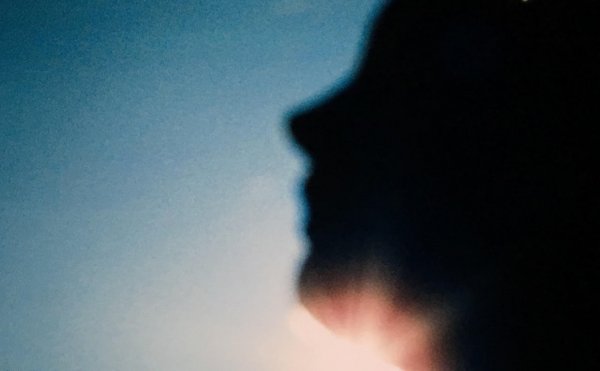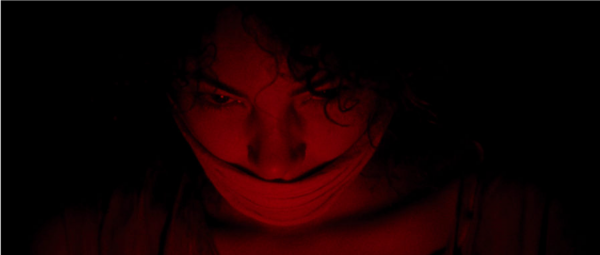Manu Dacosse on Laissez bronzer les cadavres

Director of Photography Manu Dacosse, SBC, recently received the Magritte award for best cinematography on the movie Laissez bronzer les cadavres, by Hélène Cattet and Bruno Forzani. Adapted from the novel by Jean-Patrick Manchette and Jean-Pierre Bastid the film is a crossover between a western and Giallo, shot on film featuring colorful images and a very pop staging.

The Mediterranean, it is summer, a sea of azure, the sun … and 250 kilos of gold stolen by Rhino and his gang! They’ve found the ideal hideout: an abandoned village, cut off from everything, invested by an artist lacking inspiration. Alas, some surprise guests and two cops will thwart their plans: this heavenly place, once a theater of orgies and wild happenings, will turn into a real battlefield … ruthless and hallucinatory!
This is the third time you’ve worked with this directors duo …
Manu Dacosse: Working with Hélène and Bruno, it’s still a little like homecoming for me. It was with them that I made my first short film and my first feature film (Amer, 2009). Part of their pictorial references, very outspoken ever since the beginning, is obviously the look of the Italian cinema of the “Giallo” years ( Mario Bava and Dario Argento). For this third film they rather wanted to make a kind of sensual western. We talked about Kill Bill, for example: the sun is very present, with the sky and the sea downright dark blue … add the polarisers please! I believe that this obsession with the blue sea comes mainly from Bruno, who is from Menton and who pushes me each film to go even further down this path. I think this time we went very far!
How do they prepare their films?
MD: They spend several months before the shoot putting everything on paper. It’s very nice for me because the blocking, the framing, everything is already indicated precisely, with an almost preconceived editing of each scene. I have, so to speak, only to realise the images they have in their heads and the very precise movements, like the widescreen shots of faces, which give certain scenes this western feel.


And in terms of lighting ? The visuals are large part of their narrative
MD: They do not have any specific requests in terms of lighting. They give me ideas of the mood they envision for each part of the film. Full sun, interior night with campfire, gray and dark sky, gray night with rain … This is where I try to translate the look of the film from the page to the screen. For example, there is this whole scene done in a very blue day for night in the last part of the film. In this case I rely mostly on color to set the mood for the scene. I must admit that I’m not a fan of very blue nights, but I also like to go in directions that I would not favour naturally. The funny thing about this couple of filmmakers is that Bruno tries to always go for denser images while Helen likes temper his requests and sometimes asks me to add a little light here and there!
How did you find the main location, which marks very strongly the visual sense of the film?
MD: They took advantage of the two years while the project was in financing to scout the locations for the film. Sicily and Spain were once considered, but in the end it was in Corsica, a place somewhere between Calvi and Île-Rousse (near the village of Lumio), that was chosen. A group of houses in ruins and completely isolated, without an acces by road other than driving a dirt track thirty minutes from the main road. Personally, I thought it was a bit “too much” during my first visit to the site in March. Notably because of the problem of transporting equipment. So we ended up flying stuff in with a helicopter and partially reconstructed one of the houses due to reasons of a possible collapse. The film was shot in June, but we still had some difficulty to shoot the many shots where the sun is a character together with the other actors. As the sun’s course changed drastically in hight between the tech recce and filming, extreme low angle shots were needed to compensate for it.
Like the poster, many sequences feature silhouetted actors …
MD: Yes, these sequences were quite complicated to manage for me. To obtain a perfect silhouette outdoors during the day in full sunlight, it is not just simply shooting in backlight as one would imagine. The level of light is such that with all the bounce one gets from the ground or stones, the only way is to try to black out everything around the camera in order to darken the subject as much as possible. So we had to put up black tents, but the coastal winds did not allow us to do so on a larger scale than framing more than one actor. For any wide shots I scheduled them depending on the sun position, under-exposing the actors as far as possible, aided by the postproduction team at Mikros by rotoscoping the actors to create the silhouettes and darken them until black. I remember a particular shot of Elina Lowensohn, in the first silhouette sequence of the film, who was covered with golden paint and suddenly had to be lit up by the sun. As I could not get any light stronger than an 1800w Arrimax on site, due to our transport limitation, I was lacking power to recreate the harsh sunlight. The solution came with a combination of mirrors, reflecting the sun on the actress.


Everything was shot in Corsica?
MD: All exteriors were, as well as some interiors like the butchery or the bar. But everything else was a build in Belgium, in the studio. That was the other challenge of this film, to credibly recreate the harsh June Mediterranean sunlight. To accomplish this I used an Arri T12 positioned on the terrace and lighting the patio and the entrance, while nine small 350 W lights created bright hotspots and rays of light in the rooms. It’s funny because I had not planned at first to use this kind of small sources, it was by moving one of them during the pre-light we saw the effect it had and that we kept it!
Tell me about the sequence of the bar, with the two policemen …
MD: This set was a difficult one for me, it was an existing location, without any charm to it, white walls … a gloomy place. So I tried to keep it as dark as possible, lighting it with a hard side light using an 18 Arrimax, somewhat in the style of Clint Eastwood and Tom Stern. It is in this kind of situation for which film is better suited, because I find it handles hard light better than digital cameras. In addition, Hélène and Bruno being very precise about their blocking, allowed me to spend time lighting the scenes. Using hard light is something I like a lot, but having a roaming camera following actors without any restriction on angles, everyone knows that it is almost impossible to light it that way. That’s why soft light has become so popular in recent years.


What camera equipment did you shoot with ?
MD: Everything was shot on an Arri 416, a great camera! As for optics a classic choice: Arri Ultra 16 and Ultra Primes. I also used a short zoom the Angénieux 7-80 mm, which was really perfect for the zooms seen in the film. All exteriors were shot on the 50D stock, which seems to me to be the most beautiful film on the market. The colors are beautiful and the image structure, even Super 16, really holds up. I do think the best way to shoot a movie, even today, is on film by using 50D for all day exteriors and to go digital for the nights. On this project though I shot on 500T when required, overexposing it a little to decrease the grain.
From a logistical point of view, it was quite an adventure shooting in Corsica. To avoid planes and the risks of x-rayed stock, the exposed film was sent by boat to Nice, then by train to Brussels to the Studio l’Equipe laboratory, which did a great job. The first four days were delivered fast enough to avoid going in the wrong direction, and eventually we received rushes every three days. As for the final grade the question was raised wether to do a 4K scan, but honestly, after comparative tests with a 2K scan, we did not really see the difference …
(Interview by François Reumont for the AFC)
Crew
Focus puller : Colin Lévêque
Gaffer : Emilien Faroudja
key grip : Julien Chassaignon – Nicola Mambourg
Production design : Alina Santos
Costumes : Jackie Fauconnier
Editor : Bernard Beets
Sound : Daniel Bruyland
Camera & lighting equipment: Eyelight
Grip : Cinétec
Film stock : Kodak 7203 et 7219
Lab: Studio l’Equipe, Bruxelles
